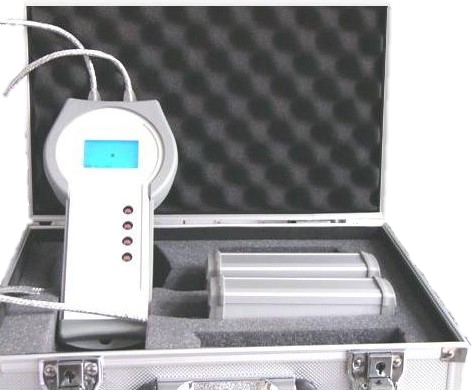
Luminous Transmittance
FLT_1 is an instrument designed for measuring the Factor of Light Transmitted into the glass, such as windscreens of auto, aircraft, and Tank.
The instrument measures the luminous transmittance.
In automotive industry, USA, Japan and EU have imposed a mandatory of 70% transmittance for the windscreens. This is because in clear day, the sunlight deteriorates the visibility of the windscreen and decreases the 70% to 40, not save.
More information can be found at UNECE (united nations economic commission for europe) in the document titled "Global Comparison Chart (CLEPA)".
The instrument is fully automatic and is designed in 3 units as depicted in this photo right, Sender, Receiver and Master.
![]() Sender unit: contains integrating sphere (known as Ulbricht sphere) for emitting uniform light, mini spectrometer for measuring the spectrum of visible light from the sphere, PCB with micro-controller and interfaces, and RS232 plug to communicate with Master device.
Sender unit: contains integrating sphere (known as Ulbricht sphere) for emitting uniform light, mini spectrometer for measuring the spectrum of visible light from the sphere, PCB with micro-controller and interfaces, and RS232 plug to communicate with Master device. ![]() Receiver unit: contains a camera for the alignment to the Sender, mini spectrometer for the spectrum of the visible light of the transmitted light into the glass, PCB with micro-controller and interfaces, and RS232 plug to communicate with Master device.
Receiver unit: contains a camera for the alignment to the Sender, mini spectrometer for the spectrum of the visible light of the transmitted light into the glass, PCB with micro-controller and interfaces, and RS232 plug to communicate with Master device. ![]() Master unit: contains a display, keyboard, PCB with micro-controller and interfaces, two RS232 to communicate with Sender and Receiver devices, and USB to communicate with the PC computer to update the firmware and select the modes from the EEPROM. Its micro-controller calculates the factor of light transmitted into the glass according to the implemented algorithm and displays the value on the 2" display.
Master unit: contains a display, keyboard, PCB with micro-controller and interfaces, two RS232 to communicate with Sender and Receiver devices, and USB to communicate with the PC computer to update the firmware and select the modes from the EEPROM. Its micro-controller calculates the factor of light transmitted into the glass according to the implemented algorithm and displays the value on the 2" display.
The instrument is tested and has measured reference Glasses with a tolerance below 0.1%, which makes it a very precise instrument. The actual package is BOS-Ecoline from BOPLA GmbH, and the Photodiode Array can be found under Hamamatsu.
Do you like the instrument? more photos are here (1) (2) (3) (4) ![]() Product description
Product description
Price: about 700 US$
(This Product was research and developed at our research center RD Microelectronics![]() )
)
